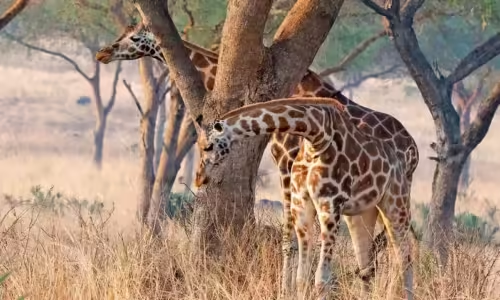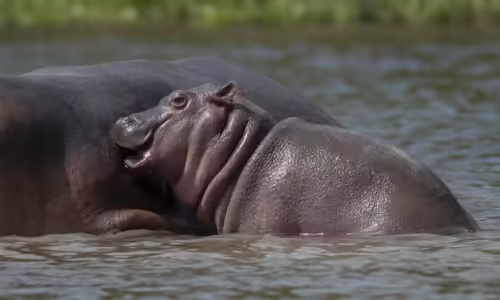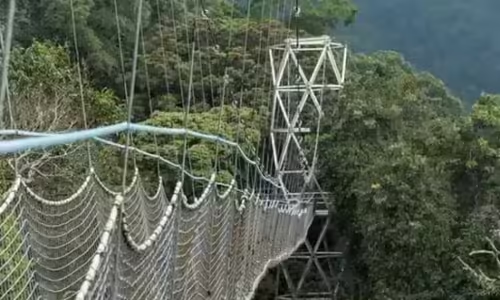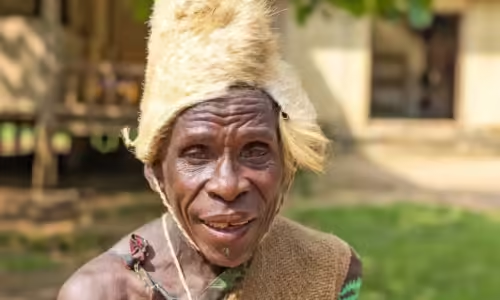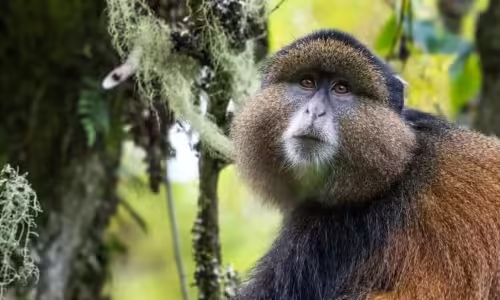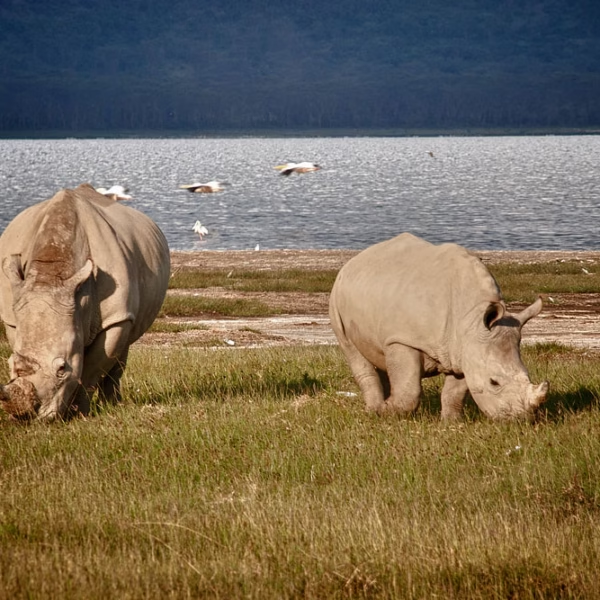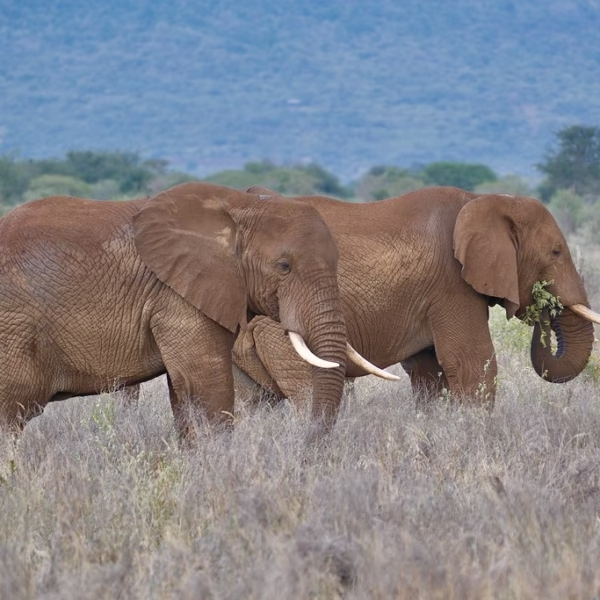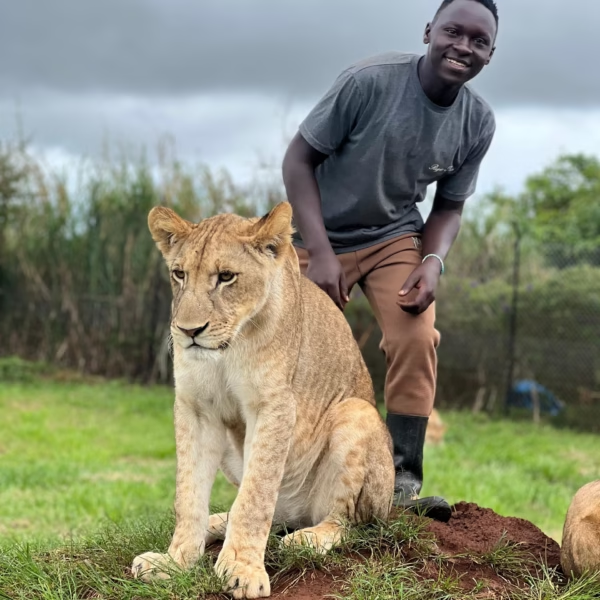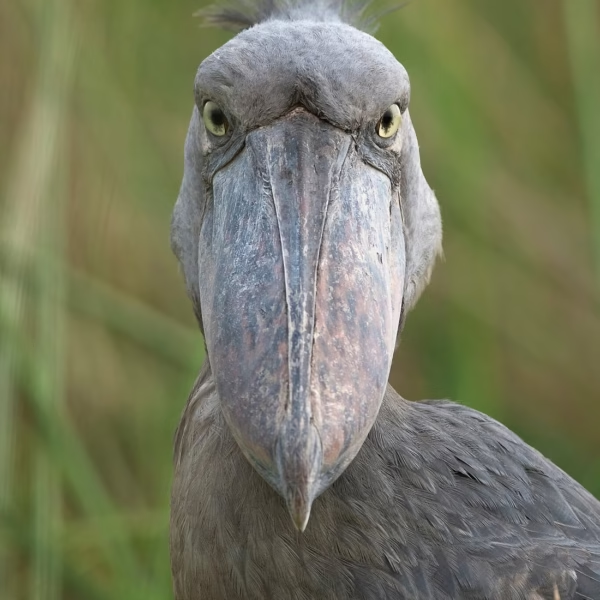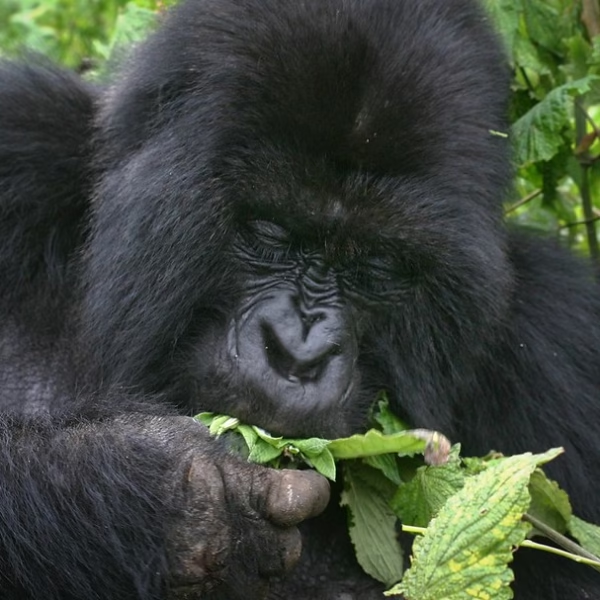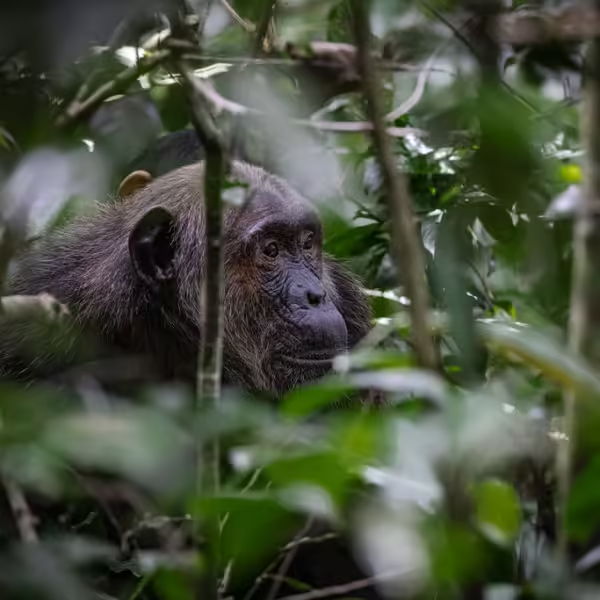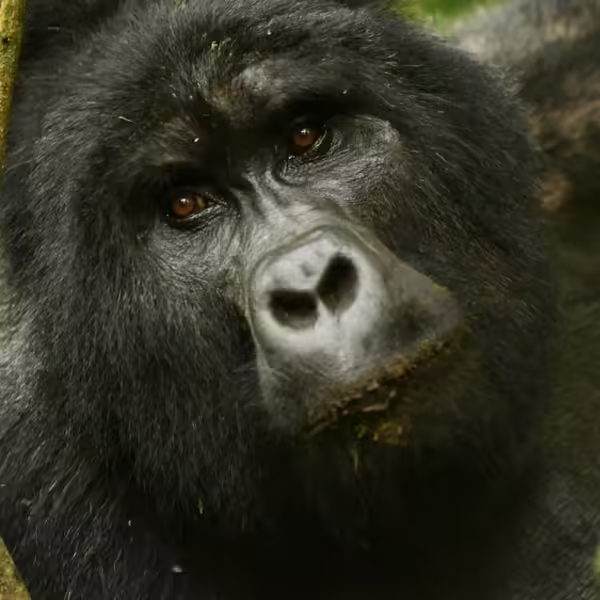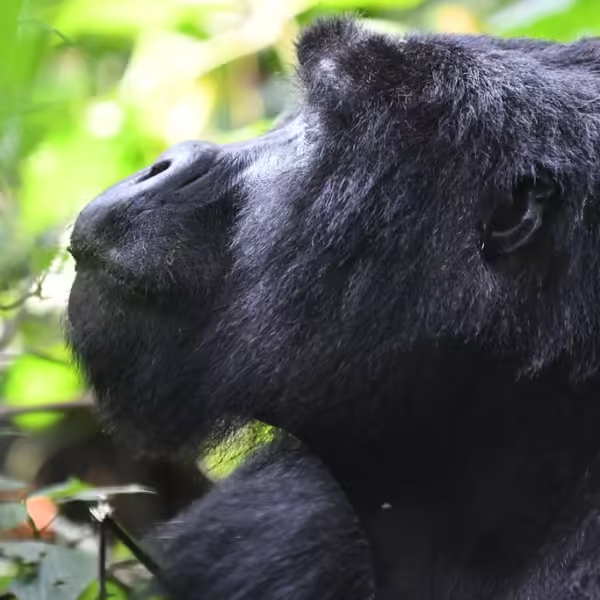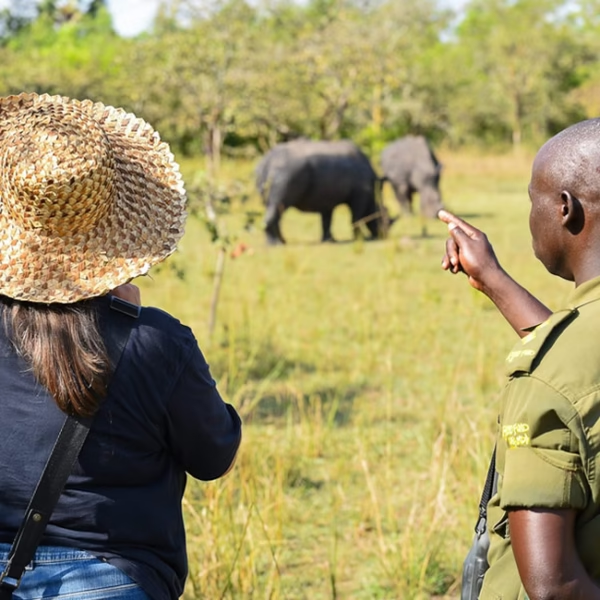
Overview
Volcanoes National Park, nestled in the breathtaking landscapes of northwestern Rwanda, is a celebrated spot famous for its captivating population of endangered mountain gorillas. Founded in 1925, this park stands as Africa’s oldest national park, covering around 160 square kilometers.
Also referred to as Parc Nationals Des Volcans in French, Volcanoes is an exceptional destination for Rwanda safaris that offer thrilling gorilla trekking experiences. These experiences provide visitors with a remarkable chance to encounter mountain gorillas in their wild surroundings while supporting conservation initiatives.
The park is a vital component of the majestic Virunga Mountain range. It features five of the eight majestic Virunga volcano peaks: Karisimbi, Bisoke, Muhabura, Gahinga, and Sabyinyo. The vibrant rainforests and towering bamboo groves create a dynamic environment teeming with a variety of wildlife, such as golden monkeys, more than 200 species of birds, and numerous other mammals.
The park’s history is intertwined with the remarkable work of American primatologist Dian Fossey, who established the Karisoke Research Center within its borders in 1967. Fossey dedicated her life to exploring and safeguarding mountain gorillas from the threats of poaching and habitat destruction. Her work captured global interest in the challenges faced by these primates and played a crucial role in their preservation.
Getting to Volcanoes National Park is easy, only a two-hour drive from Kigali, the capital of Rwanda. The park has transformed into a top spot for eco-tourism, drawing visitors from around the globe who are excited to embark on gorilla trekking and explore thrilling activities like hiking and cultural tours.
The breathtaking scenery, diverse wildlife, and deep historical roots create a remarkable and essential destination for conservation and tourism in Rwanda’s Volcanoes National Park.
Guide To The Safari Park ( Destination )
Exploring the majestic mountain gorillas in Volcanoes National Park
Landforms and Plant Life
Volcanoes National Park’s landscape features dramatic slopes and a variety of ecosystems, from vibrant rainforests to towering bamboo forests and expansive heathlands at elevated heights. The volcanic soils in this area teem with nutrients, fostering the park’s lush vegetation and lively biodiversity. This serves as an essential home for a variety of wildlife, especially the rare mountain gorillas and golden monkeys.
The plant life in Volcanoes National Park is incredibly diverse, shaped by its varying elevations. At lower elevations, lush rainforests thrive, giving way to vibrant bamboo forests as you ascend between 2,500 and 3,200 meters. Ascending to elevations of 2,600 to 3,600 meters, the park showcases Hagenia-Hypericum forests, creating a distinctive ecological haven. Above 3,600 meters, the landscape transforms into a realm of Afro-alpine vegetation, showcasing extraordinary plant species like Lobelia wollastonii and Senecio erici-rosenii. This vibrant variety of plant life nurtures an exciting multitude of animal species. It enhances the park’s recognition as a UNESCO World Heritage Site.
The weather in Volcanoes National Park is shaped by its height and unique geographical setting. The region is alive with frequent rainfall all year round, thanks to its tropical climate, which nurtures the lush growth of its evergreen forests. The blend of high humidity and rich volcanic soils fosters a perfect setting for a diverse array of wildlife to thrive. This extraordinary landscape nurtures the vibrant endangered mountain gorillas and provides homes for a variety of bird species and other mammals that flourish in this abundant ecosystem.
The plant life in Volcanoes National Park showcases a remarkable diversity, shaped by its varying elevations.
Nature’s wonders
Volcanoes National Park is a vibrant ecosystem celebrated for its diverse wildlife, especially the endangered mountain gorillas. The park shelters around 30% of the globe’s remaining mountain gorilla population, establishing it as an essential location for their preservation. According to scientific studies and reports, Volcanoes National Park is home to around 36 species of mammals.
Alongside the majestic mountain gorillas, the park is home to the rare golden monkeys, a species found only in the Virunga region. Among the remarkable mammals are forest elephants, buffaloes, bush pigs, giant forest hogs, black-fronted duikers, and spotted hyenas. Although larger mammals inhabit the area, they tend to be hard to spot because of the challenging landscape and thick woodlands, resulting in rare encounters.
Birdwatching in Volcanoes National Park offers an exhilarating experience, featuring over 200 recorded bird species. The park lies within the Albertine Rift region, celebrated for its remarkable diversity of unique species. Birders will encounter remarkable species like the Rwenzori Turaco, the striking handsome francolin, and a variety of sunbirds, including the vibrant Rwenzori double-collared sunbird.
Among the remarkable bird species are the regal sunbird, the Ruwenzori batis, and the striking collared apalis. The park’s varied habitats—from lush tropical rainforests to serene bamboo groves and towering montane ecosystems—harbor an impressive array of bird species, creating an exhilarating experience for both novice and seasoned birdwatchers.
The distinctive blend of volcanic terrains and varied ecosystems plays a crucial role in the park’s ecological significance. The changes in elevation give rise to unique environments that nurture a diverse array of plant and animal life. The vibrant array of life enhances the park’s allure for those who seek the thrill of the wild. It is essential for safeguarding Africa’s endangered species and their environments.
Exploring the wonders of Gorilla Trekking in Volcanoes National Park, Rwanda
Explorations in Volcanoes National Park
Embarking on a journey to observe gorillas in their natural habitat
Gorilla trekking stands out as the most sought-after experience in Volcanoes National Park. The park hosts approximately 30% of the globe’s mountain gorillas, positioning it as an exceptional destination for thrilling gorilla encounters. Each day, only 80 permits are available, granting groups of up to eight trekkers the chance to explore one of the ten habituated gorilla families.
The gorilla trekking experience kicks off at dawn with an exciting briefing at the park headquarters, where adventurers are grouped and assigned to specific gorilla families to track. Among the notable gorilla families in the park are the Susa group, the Agashya group, and the Kwitonda group.
The gorilla trek can stretch from 30 minutes to several hours, influenced by the gorillas’ location, and concludes with an exhilarating one-hour observation of these magnificent creatures in their natural habitat.
Participating in gorilla trekking comes with a hefty price tag, as permits are set at $1,500 per person. This fee fuels exciting initiatives for conservation and empowers local communities to thrive. Adventurers are encouraged to secure their permits ahead of time, as demand is high and availability is limited.
Trekkers must be prepared physically, as the landscape can be demanding, involving hikes through thick bamboo forests and steep inclines. Wearing the right clothing is essential for gorilla treks—opt for long-sleeved shirts and trousers, sturdy hiking boots, and don’t forget to bring rain gear because the park’s weather can be quite unpredictable.
Even with the challenges involved, the joy of dedicating an hour to watch these primates in their wild habitat is beyond compare.
Embark on a thrilling journey to encounter the majestic golden monkeys.
Much like gorilla trekking but with a lighter touch, golden monkey trekking in Volcanoes invites you to follow these lively primates as they frolic through the forest. With their stunning golden fur and lively social behaviors, golden monkeys offer a captivating spectacle as they bound and frolic through the bamboo forests.
The golden monkey, a sub-species of the Sykes monkey, boasts striking orange fur and is found exclusively in the Virunga region, which stretches across parts of Rwanda, Uganda, and the Democratic Republic of Congo. Volcanoes National Park is home to two lively troops of golden monkeys, with the larger group residing near Mount Sabyinyo, comprising approximately 80 to 100 members. These monkeys primarily inhabit the bamboo forests at the foot of the volcanoes, allowing for exciting opportunities to track and observe them.
The trekking experience usually kicks off at the break of dawn with an exciting briefing at the park headquarters around 7:00 AM. Guests are subsequently organized into intimate groups and led by knowledgeable park rangers.
The journey can last from 30 minutes to several hours, influenced by where the monkeys are, as they often wander in pursuit of food. Once discovered, adventurers can immerse themselves for an hour in the lively antics of the monkeys as they feed, frolic, and leap among the branches. This encounter offers an exceptional chance for capturing stunning images and observing their social dynamics from a close perspective.
A permit for trekking with the Golden Monkeys in Volcanoes is priced at $100 per person and is necessary for joining the adventure. In contrast to gorilla trekking, golden monkey trekking welcomes adventurers of all ages, making it a perfect choice for families seeking an exciting experience together.
Volcanoes National Park presents an array of thrilling and easily navigable hiking trails that lead you through the wonders of volcanic landscapes.
Exploring Volcanoes
Volcanoes National Park presents some of the finest and most easily reachable hiking trails that lead you through stunning volcanic landscapes. The park boasts five of the eight majestic volcanoes in the Virunga Mountain range: Mount Karisimbi, Mount Bisoke, Mount Muhavura, Mount Gahinga, and Mount Sabyinyo. Among these, the most thrilling hikes are Mount Bisoke and Mount Karisimbi.
Mount Bisoke Hike: Rising to 3,711 meters, Mount Bisoke boasts a breathtaking crater lake at its peak. The hike usually spans around 5 to 7 hours for the entire journey, influenced by personal fitness levels and how often one takes breaks along the way. The trail offers a delightful challenge, welcoming those who are in good shape and eager to embrace the experience, regardless of their previous hiking background. Hikers embark on thrilling journeys led by knowledgeable rangers who share fascinating insights about the local flora and fauna, along with essential safety instructions. The trek unveils stunning vistas of the area’s wild terrain, showcasing vibrant woodlands and dramatic volcanic formations.
Mount Karisimbi Hike: The journey to the summit of Mount Karisimbi is challenging and typically spans two days, with hikers camping overnight at a high elevation. Standing tall at 4,507 meters, this hike challenges you to push your limits and embrace the journey ahead. The trek winds through diverse ecosystems, featuring bamboo forests and Afro-Montane vegetation, providing hikers with an opportunity to immerse themselves in the park’s vibrant biodiversity. Upon reaching the summit, trekkers are greeted with breathtaking vistas of the surrounding volcanoes and the stunning Twin Lakes nestled below.
The Dian Fossey Trail offers a remarkable journey to the final resting place of a true trailblazer in the study and conservation of mountain gorillas, a woman who devoted her life to this noble cause. The journey to her grave site, nestled close to her old research camp at Karisoke, invites visitors to honor her legacy and discover her remarkable contributions to wildlife conservation. The hike usually lasts between 1 to 3 hours, offering opportunities to encounter diverse wildlife, such as birds and monkeys, along with breathtaking vistas of the nearby volcanic terrain.
Trekkers must gear up for exhilarating hikes in Volcanoes National Park, where the weather can shift unexpectedly and the terrain offers thrilling challenges. Put on your reliable hiking boots, pack your rain gear, and make sure to have plenty of water and snacks on hand. Guided hikes ensure safety and navigation, with seasoned park rangers leading groups and sharing fascinating insights about the flora and fauna along the trails.
Exciting cultural experiences in the Volcanoes at Iby’Iwacu Cultural Village
Exciting Encounters
Volcanoes National Park presents an array of engaging cultural experiences that dive deep into Rwanda’s vibrant heritage and traditions. Some of the most celebrated cultural journeys include:
Iby’Iwacu Cultural Village, often referred to as the Gorilla Guardians Village, stands out as one of the most remarkable cultural attractions in Volcanoes National Park. Visitors to Iby’Iwacu immerse themselves in local culture through vibrant traditional music and dance performances, captivating storytelling, and hands-on workshops. They can dive into activities like brewing banana beer, mastering traditional cooking, and immersing themselves in the daily life of a local by taking part in subsistence farming practices. The cultural village presents an exciting chance to explore the rich history and vibrant customs of the Rwandan people, featuring fascinating insights into the royal traditions of yesteryear.
Batwa Pygmy Community Experience: Another remarkable cultural experience awaits as you visit the Batwa community, the indigenous people of the forest surrounding Volcanoes National Park. The Batwa have embarked on a journey from their traditional ways of gathering to exploring a variety of income-generating pursuits, including pottery making and craft production. Visitors can dive into engaging activities, such as preparing traditional meals or exploring local crafts. This engagement enhances the visitor’s journey and bolsters the Batwa’s initiatives to safeguard their heritage while embracing contemporary ways of living.
Annual Kwita Izina Festival: Also known as the Gorilla Naming Ceremony, Kwita Izina is a one-of-a-kind cultural experience held each year just outside Volcanoes National Park. This event marks the joyous arrival of baby mountain gorillas. It draws inspiration from a time-honored Rwandan custom where families gather with cherished ones to bestow names upon their children. Since its inception in 2005, Kwita Izina has emerged as a remarkable event that celebrates both conservation and cultural heritage, underscoring the vital need to safeguard these endangered creatures. At the ceremony, conservationists, researchers, and dignitaries come together to bestow names upon the newborn gorillas from the past year. The festival celebrates the gorillas while recognizing the dedication of local communities, rangers, and conservationists who passionately strive to safeguard these endangered beings.
Additionally, guided community walks offer an exciting insight into the vibrant daily life of nearby villages. These walks frequently feature stops at local homes, schools, and markets, inviting tourists to witness and engage in the vibrant customs and practices of the community. Connecting with local artisans and farmers provides an enriching glimpse into Rwandan culture and builds meaningful relationships between visitors and residents.
Volcanoes National Park, Rwanda is a place brimming with excitement and exploration.
The Importance of Volcanoes National Park in History
Volcanoes National Park is steeped in rich history, largely thanks to the fearless efforts of Dian Fossey, an American primatologist who devoted 18 years to the study and protection of mountain gorillas. In 1967, Fossey founded the Karisoke Research Center nestled between Mount Karisimbi and Mount Bisoke, where she embarked on pioneering research into the behavior and ecology of gorillas. Her efforts played a crucial role in shining a spotlight on the struggles of these endangered animals, facing dangers from poaching and habitat loss. Fossey’s groundbreaking methods in gorilla habituation set the stage for responsible wildlife tourism in the area, enabling travelers to experience Africa’s gorillas in their wild environment.
Fossey’s conservation work was filled with obstacles. She encountered formidable challenges from poachers and gained a reputation for her bold approaches, which involved direct confrontations and utilizing “active conservation” strategies. This approach embraced her own resources to empower park rangers, equipping them with the essential tools and training to tackle poaching with determination. Her life took a dark turn in December 1985 when she was murdered, leaving behind a mystery that still lingers today. Fossey found her final resting place at Karisoke, next to her cherished gorilla Digit and other gorillas who tragically lost their lives to poaching. Her grave has transformed into a destination for those eager to pay tribute to her enduring legacy.
Fossey’s unwavering commitment to mountain gorilla conservation not only brought global attention to their struggles but also opened doors for sustainable tourism that enriches both local communities and the gorillas themselves. Her legacy sparks the imagination of countless conservationists and adventurers at Volcanoes National Park.
Getting to the park: Your guide to accessibility
Reaching Volcanoes National Park from Kigali, the vibrant capital city, is a breeze. The park lies 110 kilometers from Kigali, just a two-hour drive away. The park’s main entry point is located in Musanze (formerly Ruhengeri), accessible through well-kept tarmac roads from both Kigali and Gisenyi.
The drive from Kigali to Musanze usually spans about 2 to 3 hours by car. The journey offers various public transport choices, including shuttles that link Kigali, Gisenyi, and Musanze. Unfortunately, there isn’t a direct public transport option available from Musanze to the park headquarters in Kinigi. Motorbike taxis are ready for the thrilling final stretch of about 3 kilometers from Kinigi to the park office.
Into the Park: Upon arriving at the park headquarters, adventurers will need their own means of transportation to explore the different entry points throughout the park, as public transport is not available. Hiring a vehicle is a smart choice, especially a 4WD high-clearance jeep, as the local tracks that wind into the forest can be quite rugged and steep.
Operational Hours: The park’s headquarters welcomes visitors every day starting at 6:00 a.m. until 4:00 p.m., where guests can finalize essential arrangements and schedule thrilling activities like gorilla trekking and golden monkey encounters. Arriving at least fifteen minutes early for gorilla trekking is a great idea to ensure a smooth and efficient start to your adventure.
For those seeking extra help at every park entry point, hiring porters is a viable choice. These porters are part of the Porters Association and are ready to guide you through challenging sections of the trails.
Ideal Moments to Explore Volcanoes
The ideal time to explore Volcanoes National Park in Rwanda truly hinges on the experiences you seek, especially when it comes to gorilla trekking. The best time for trekking is during the dry seasons, which span from June to mid-September and December to February. The drier seasons create a more enjoyable experience on the trails, allowing for smoother navigation and less mud to contend with.
During the day, temperatures in Volcanoes usually hover between 25°C and 27°C (77°F to 81°F). Nights can bring a refreshing chill, dipping to between 13.5°C and 15°C (56°F to 59°F).
Although the dry season is favored for gorilla trekking because of improved trail conditions, exploring during the wet seasons—March to May and October to November—can also offer unique experiences. The rain often surprises with its brief appearances, allowing for plenty of opportunities to enjoy various activities without interruption.
The wet season brings vibrant green scenery and is a fantastic opportunity for birdwatching, as numerous species flock to the blooming plants. During the rainy months, gorillas often descend to lower elevations in search of food, which can make tracking them easier, even with the challenging trail conditions.

